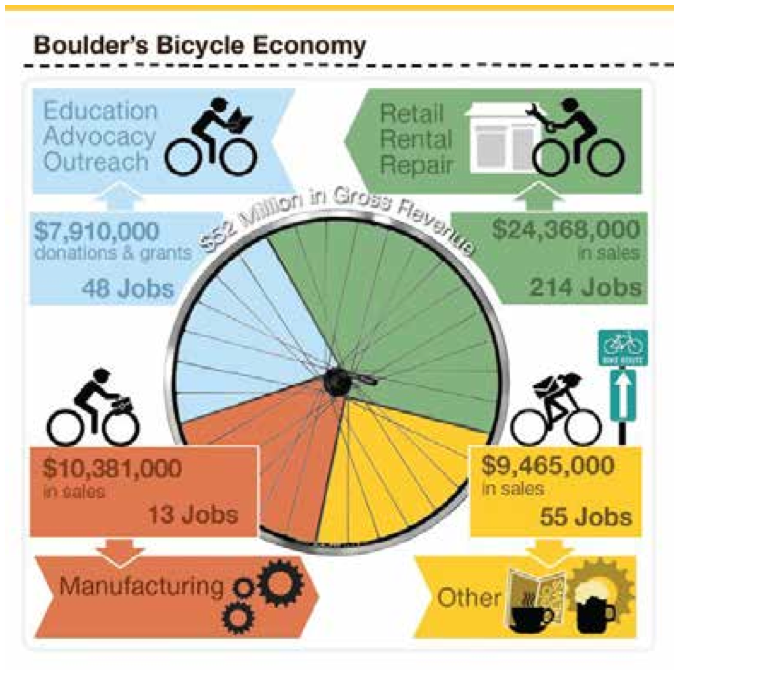LEAGUE OF AMERICAN BICYCLISTS
Introduction: Why is bicycling good for the economy?
Each year several new studies come out that help make the case that investments in safe and attractive bicycling pay economic dividends. We’ve added dozens of sources (and about 10 pages) to this report since it was originally released in 2009.
The research can get technical, but the principles are simple:
- People who ride bikes buy bikes. This puts people to work in bicycle shops and apparel stores.
- People who ride bikes buy other things, too. Bike-accessible business districts benefit by catering to these customers.
- People on bikes are also more likely to make repeat trips to their local stores.
- People who ride bikes on vacation buy food, have travel costs, and pay for lodging. Bicycling tourists bring millions of dollars to cities and towns across the country that wouldn’t otherwise end up there.
All that spending means jobs — and tax revenue — for communities. But people who ride bikes also save money.
- With the money saved from lower travel costs, people who ride bikes have more of their money to spend on local businesses.
- People who ride bikes can save their companies money on health insurance costs.
- Developers, cities, and individuals can save money on parking costs by providing space-efficient, low-cost bike parking instead of expensive car parking.
The best way to attract people who ride bikes and accrue all of these benefits is by building infrastructure that makes it more attractive for people to ride. Building that infrastructure creates jobs, and it does so extremely cost-effectively. In fact, there’s no better job-creating bang for your transportation buck.
- Road projects are materials-intensive. Much of a road project budget goes to materials. By contrast, bicycling and walking projects are labor-intensive. Bicycling and walking project create more jobs per dollar than road projects.
- A built-up city can add capacity for new bicyclists much less expensively than new capacity for drivers.
National Economic Impact Studies
Regions that have invested in bicycling have seen tangible economic impacts. Studies show that the bicycle industry, bicycle tourism, and the health benefits from bicycling create jobs, economic activity, and cost savings.
Today bicycling manufacturing is a $6 billion national industry.iii But the economic benefits associated with riding extend far beyond that number. The nation’s 60 million annual recreational bicyclists spend $46.9 billion on meals, transportation, lodging, gifts and entertainment. One study estimates that the spill-over effects of all bicycling-related activities could be as large as $133 billion, supporting 1.1 million jobs and generating $17.7 billion in federal, state, and local taxes.
Read full Report (PDF) here: Bicycling Means Business
About League of American Bicyclists
www.bikeleague.org
“The League began as the League of American Wheelmen (LAW) in 1880, and was responsible for defending the rights of cyclists from its start. The League of American Wheelmen is credited with getting paved roads in this country before the reign of the automobile.”







 RSS Feed
RSS Feed